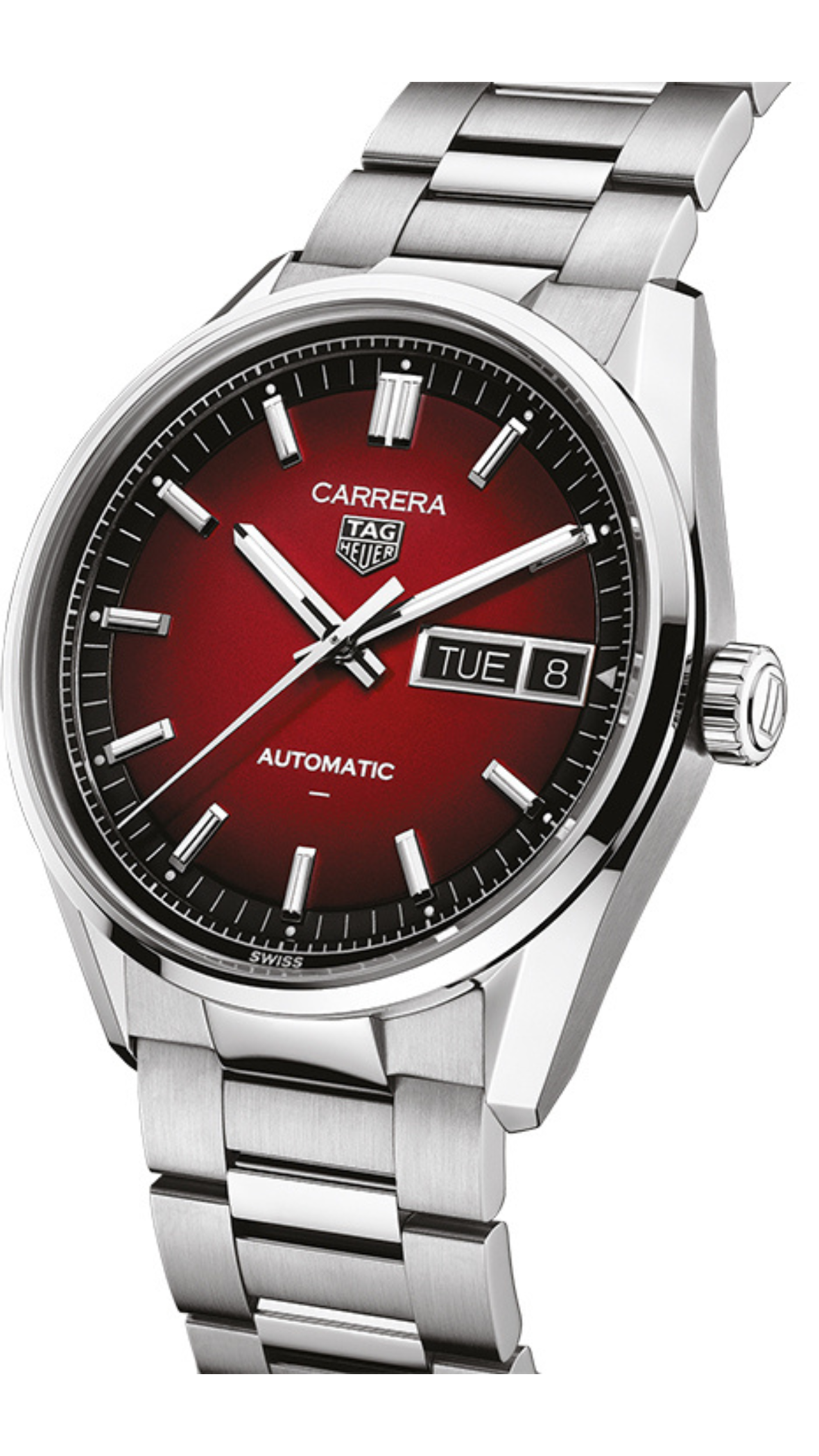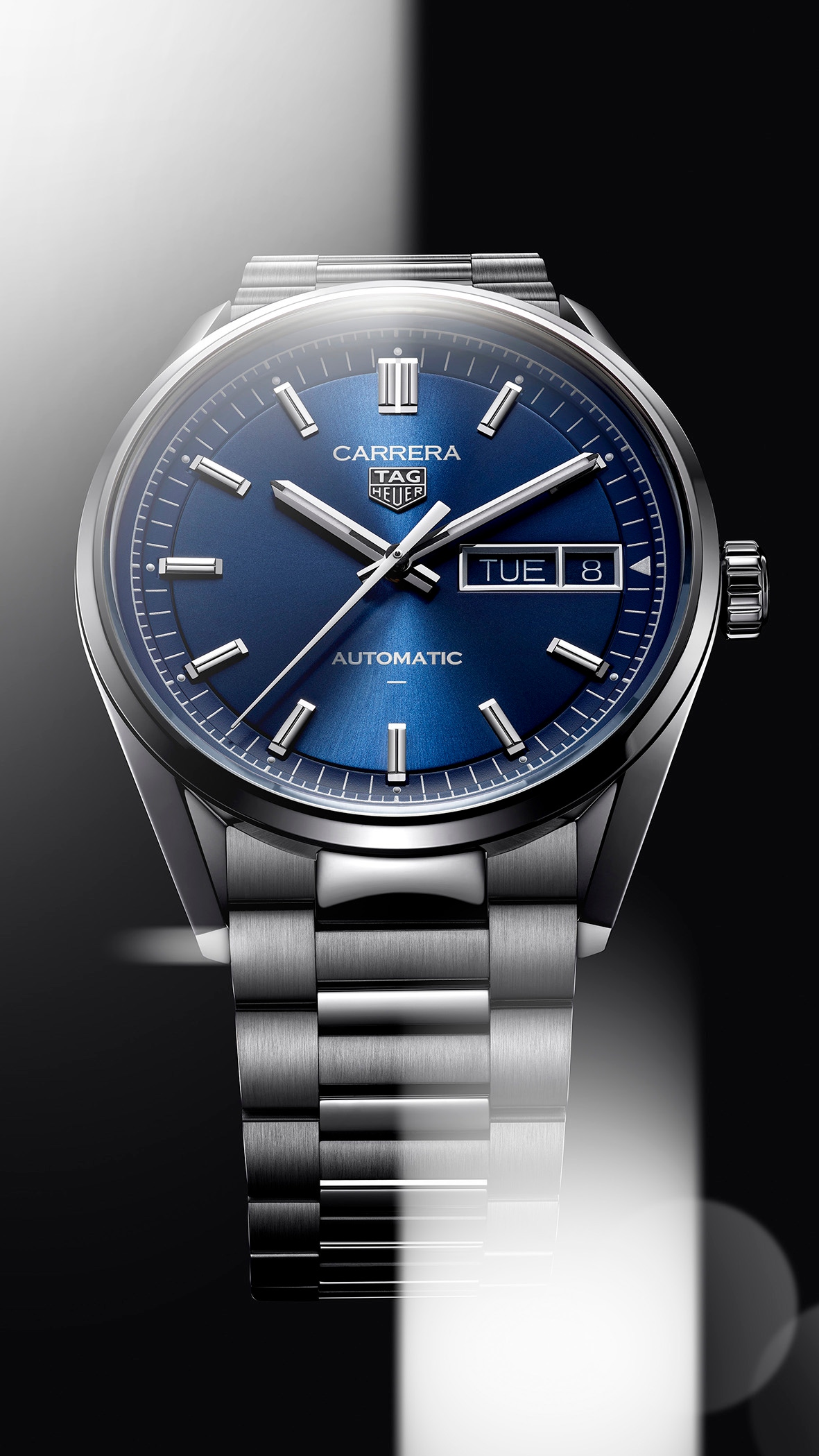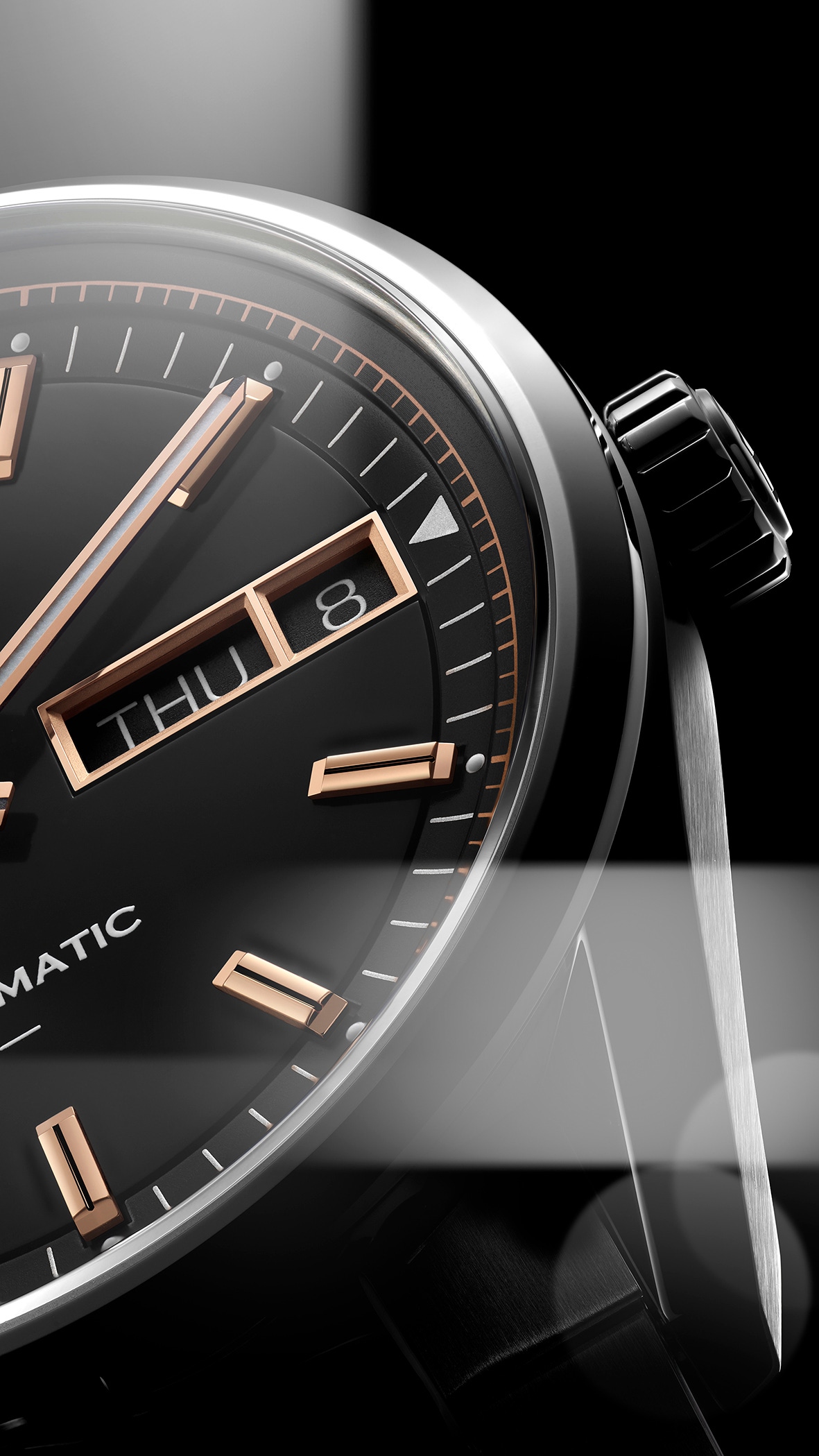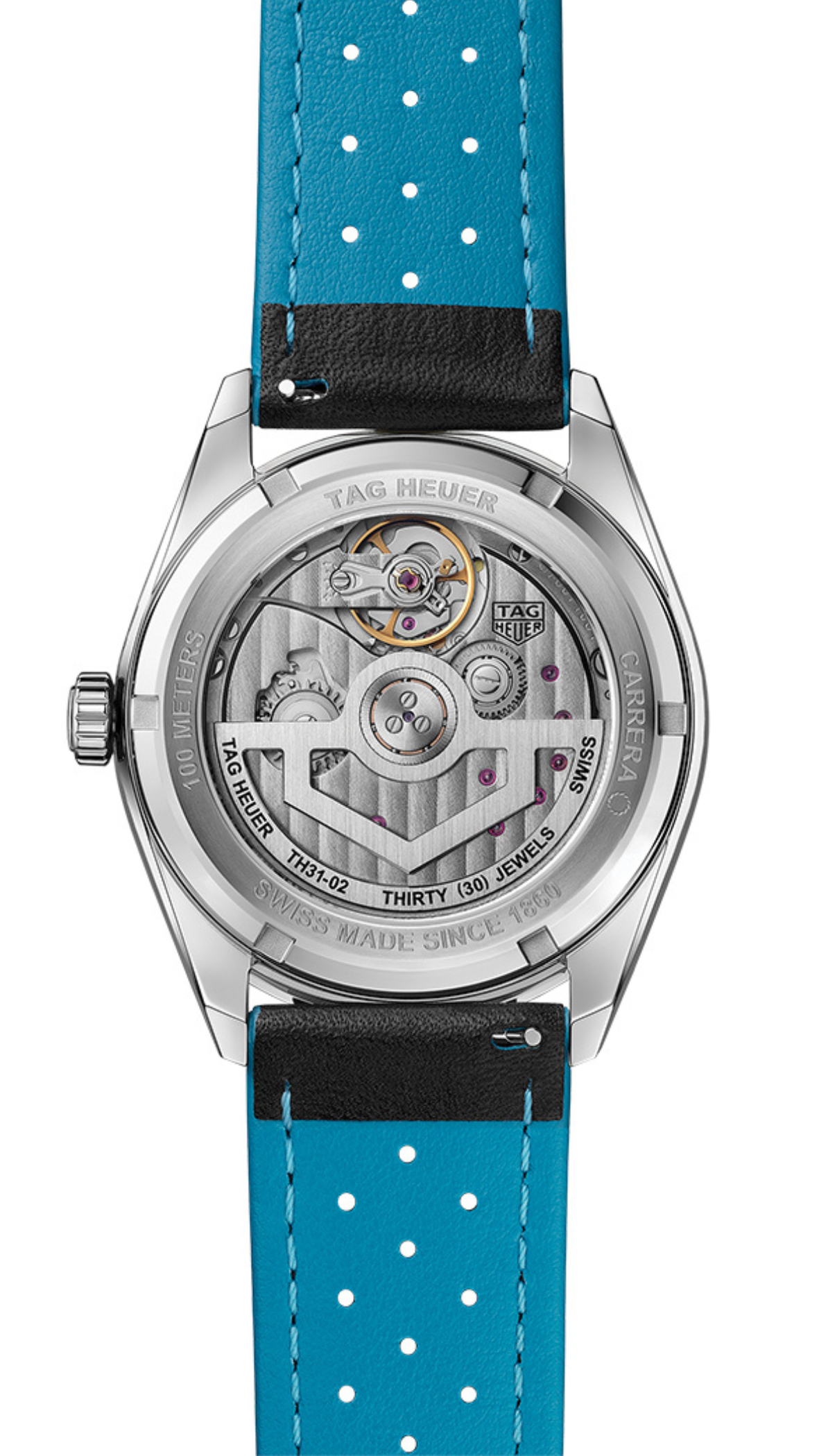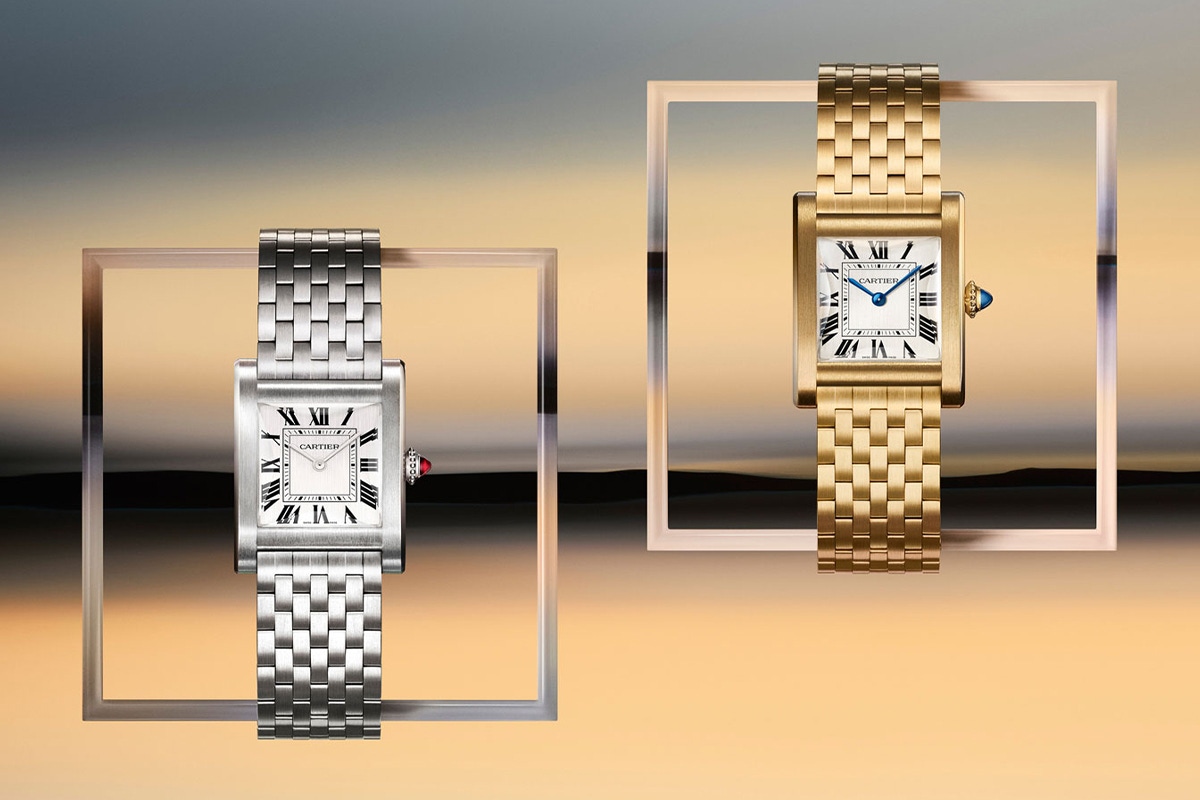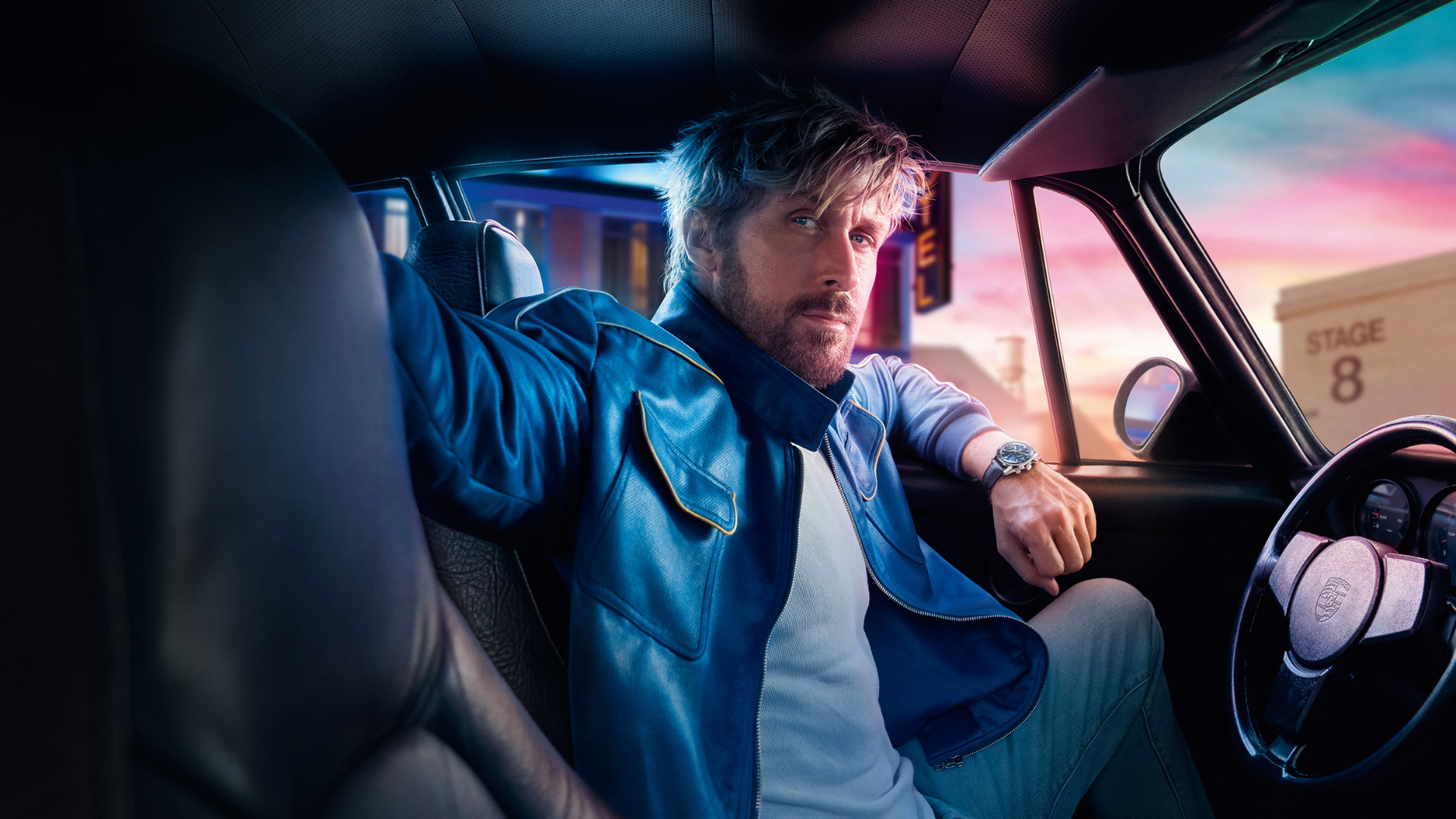Moving the Needle
When they unveiled five new Carrera Day-Date novelties at Watches and Wonders in April, Tag Heuer proved that evolution needn’t take place one small step at a time.

When it comes to seeking examples of renewal amid the arbitrary tweaks, Watches and Wonders can take the needle/haystack metaphor to confounding new levels. All too often, R&D departments, focused on transformative outcomes in the long term — and perhaps unwilling to steal too much thunder from their future selves, or their successors — limit themselves to the odd, homeopathically small change to existing models here and there. Their tentativeness is, to a point, understandable, but it has got to the point where the word ‘novelty’ can seem grandiloquent.
So it was refreshing to see, presented within the Tag Heuer camp at Watches and Wonders this year, a set of five Tag Heuer Carrera Day-Date models that displayed a few impressive adaptations to changing times, as opposed to the evolutionary equivalent of a fractional change in a Galápagos finch’s beak size. Tag themselves are referring to the new collection as one that “revitalises an icon”, and to explain the ‘icon’ part, we need to start — and apologies to those already well versed in it — with the Carrera’s backstory.
It’s one that begins in the 1950s, and the Carrera Panamericana road race, a border-to-border sedan rally event in Mexico comparable to the Mille Miglia or the Targa Florio. In 1962, Jack Heuer — the fourth-generation family member helming the business at that time — met the parents of Pedro and Ricardo Rodriguez (the latter of whom had become the first Mexican driver to compete in Formula One in 1961). The hair-raising anecdotes they told Jack about the Carrera Panamericana — an event made so perilous by under- accomplished drivers, ultra-fast straights and precipitous mountain segments that it had been discontinued in 1955 — inspired him to create a timepiece encapsulating the spirit of the drivers who hurtled over its tyre-shredding contours.
The criteria were strict: an uncluttered dial (for legibility), exceptional precision, sportiness and enduring elegance all had to be in the mix. The resulting Tag Heuer Carrera (the word means ‘career’ as well as ‘race’ and ‘thoroughfare’), which came out in 1963, with its unique design informed partly by Jack’s yen for midcentury designers such as Le Corbusier, ticked all the boxes. Jack ramped up the Carrera’s icon factor (not to mention the validity of its unofficial nickname, the ‘success watch’) by gifting engraved versions to the likes of Niki Lauda and Mario Andretti. Stardust has more recently been sprinkled on Carrera mythology by Dwayne Johnson, Leonardo DiCaprio, Cara Delevingne and Ryan Reynolds, who wore one in a short movie made to celebrate the Carrera’s 60th anniversary.
There have been some exceptional Carreras over the years (the diamond-encrusted Plasma Tourbillon Chronograph from 2022 springs to mind, as does the Carrera Sport version with gold bezel and tourbillon complication), while the many Day-Date iterations that have caught the eye include one with a green dial launched to celebrate Saudi Arabia’s 94th National Day late last year.
And what of the ‘revitalises’ part of that marketing bijou? How does that play out in a new line that has five pieces bearing the elongated window next to that displaying the day of the month, the visual cue of a Day-Date complication since Rolex introduced their version in 1956? (There is also an updated Carrera Date Twin-Time with a dial in sunray brushed teal.)
Firstly, the subtle differences in ‘vibe’. For smart-casual ensembles, perhaps opt for the one in steel with blue sunray brushed dial, or maybe ramp up the flamboyance with the version whose dial is in smoky-red opaline. A touch of sportiness is brought to the table by the iteration whose black grained dial is distinguished by its red lacquered central hand and vivid touches of blue on the dial, a black calfskin strap with light blue lining completing the effect. For more understated refinement (perhaps with tailoring), the version in steel whose black opaline dial is graced with 18-karat rose-gold-plated and polished applied indexes and hands should do the trick, while a version of this model with an alternating rose-gold/steel bracelet option completes the set.
The basic silhouette of the five, of course — all of which come with 41mm cases — remains distinctively recognisable to the one Jack Heuer and his team dreamed up almost three-quarters of a century ago. But several subtle enhancements — mutations, to return to our evolutionary conceit — bring the Carrera concept into a new era. Depth, balance and legibility have been enhanced by a reimagined dial construction whose three-dimensional aspect is inspired by the Tag Heuer Carrera Glassbox; a wider crystal opening — which also increases legibility — has been facilitated by a thinner, more refined bezel geometry. The Victory Wreath engraving now found on the caseback, meanwhile, adds symbolic resonance if you are gifting a piece to wish the recipient success and accomplishments.
Whichever you choose, and whatever the reason for your purchase, you will be acquiring something emblematic not just of victory, fortune and success but of renewal.


